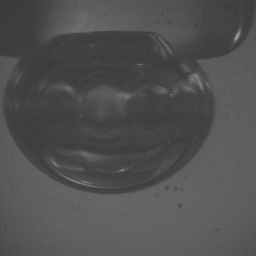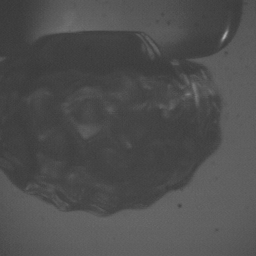Before looking at the three movies on this page, you might like to look at two web pages which explain the context. The first web page shows a reconstruction of Faraday's original experiment (click here for movies); and the second web page explains the process of producing such waves on a bubble (click here for movies).
 |
 |
|
| The three movies on this page show a bubble as the amplitude of excitation increases. On the left a single mode, the Faraday wave, is excited (the zero-to-peak acoustic pressure amplitude is 24 Pa). In the middle frame, an increase in the amplitude of the driving acoustic field has caused more modes to be excited (the zero-to-peak acoustic pressure amplitude is 44 Pa). On the right, so many modes have been excited that the bubble fragments (the zero-to-peak acoustic pressure amplitude is 139 Pa). The mean radius of the bubble is ~2.1 mm. The driving field has frequency 1.5006 kHz. | ||
Click here to see movies of Faraday waves on rising bubbles, and their influence on mass flux in the liquid.
(Video: PR Birkin, YE Watson, TG Leighton).
This page was last updated by TG Leighton, 27 September 2004